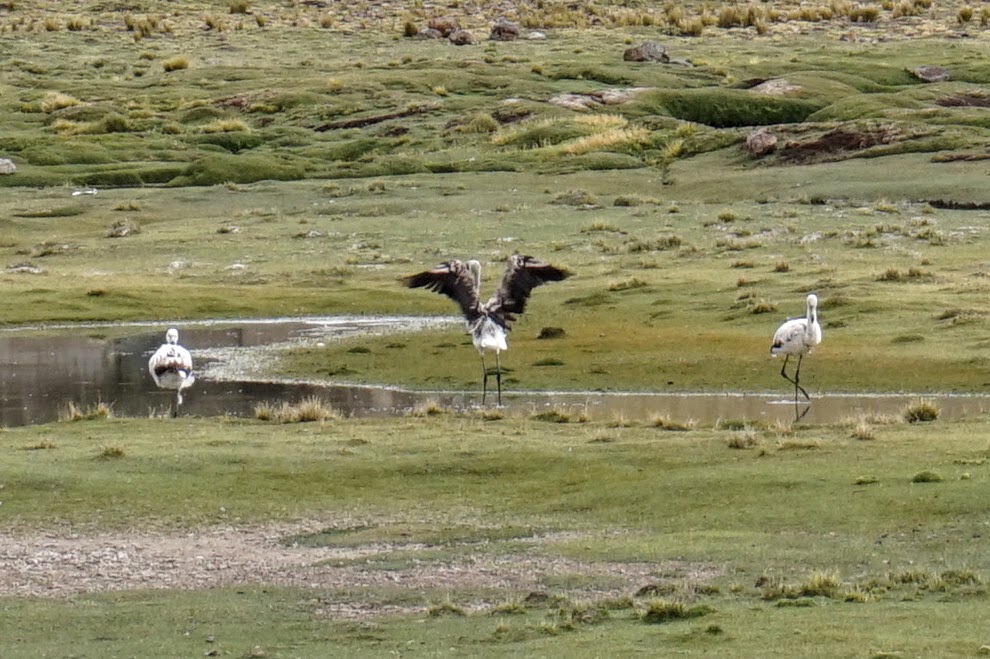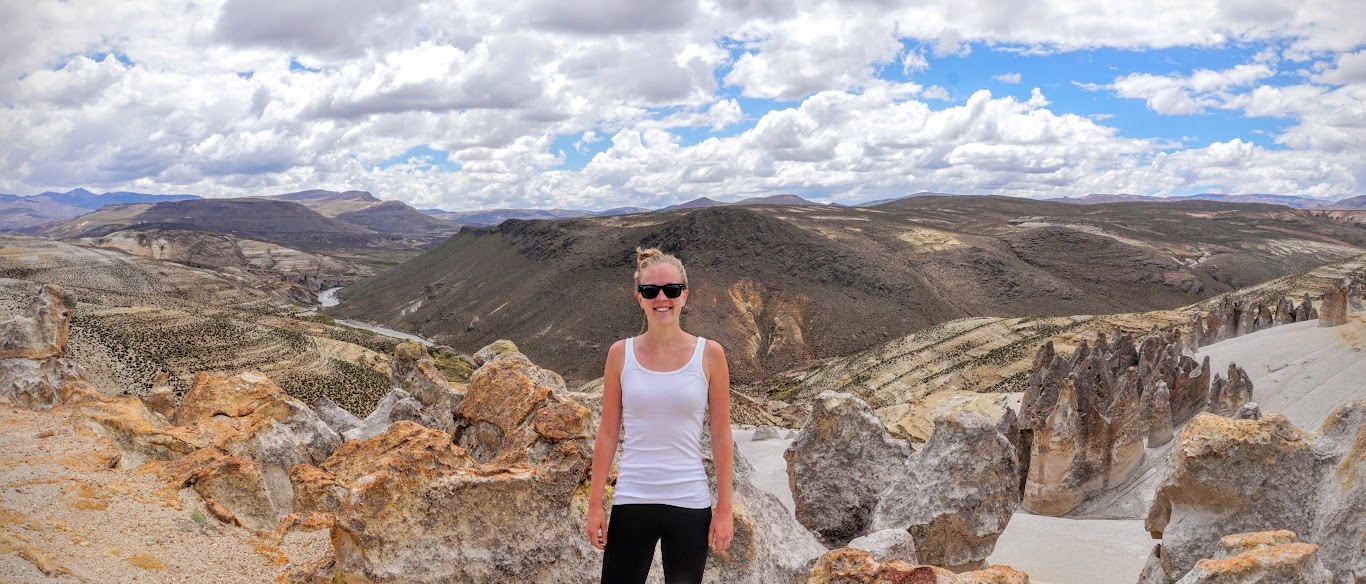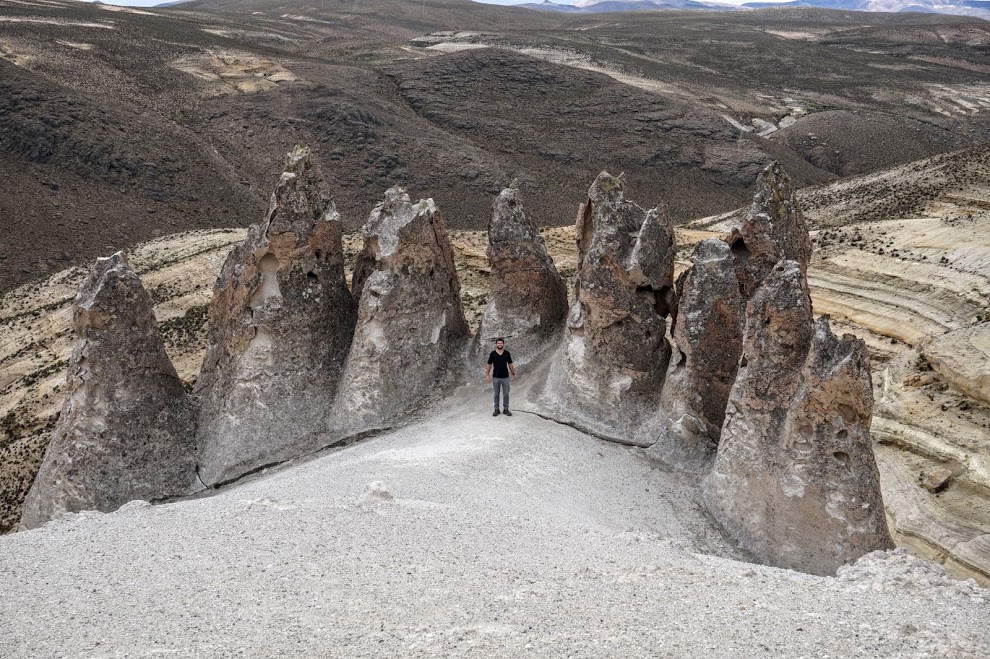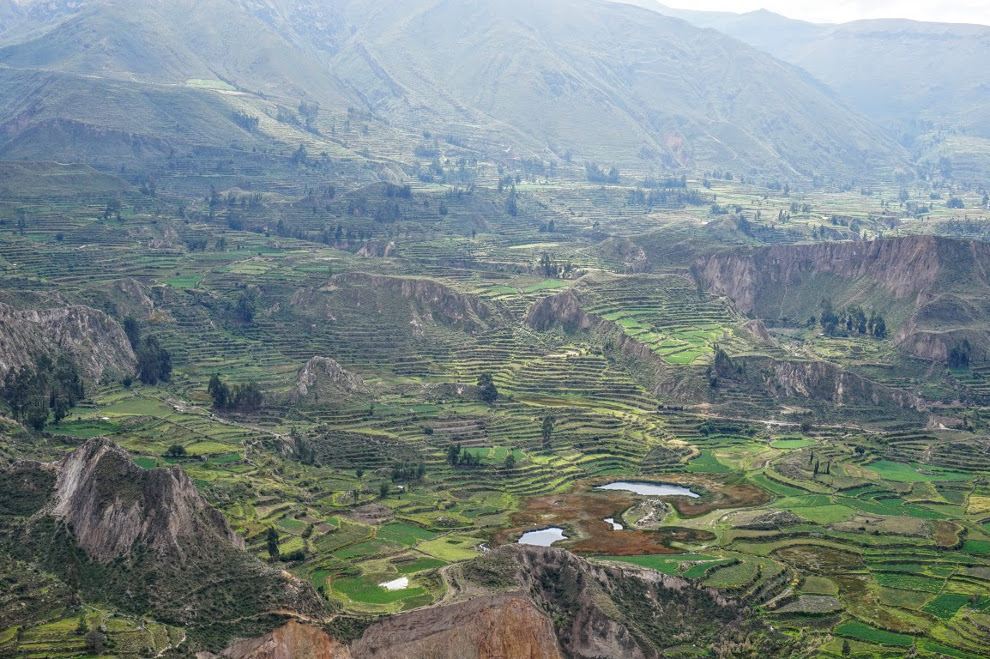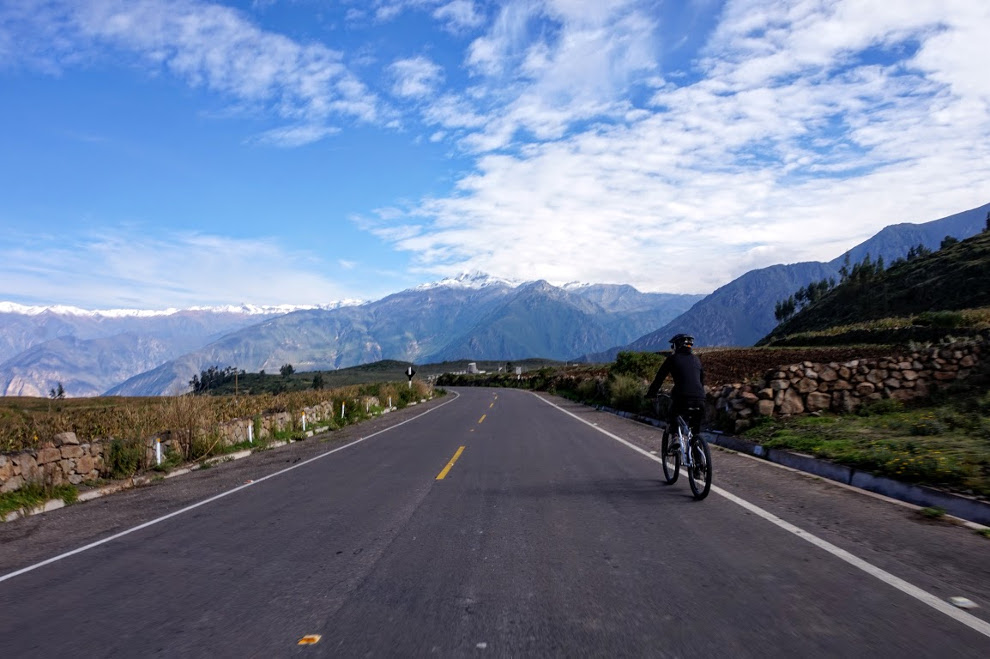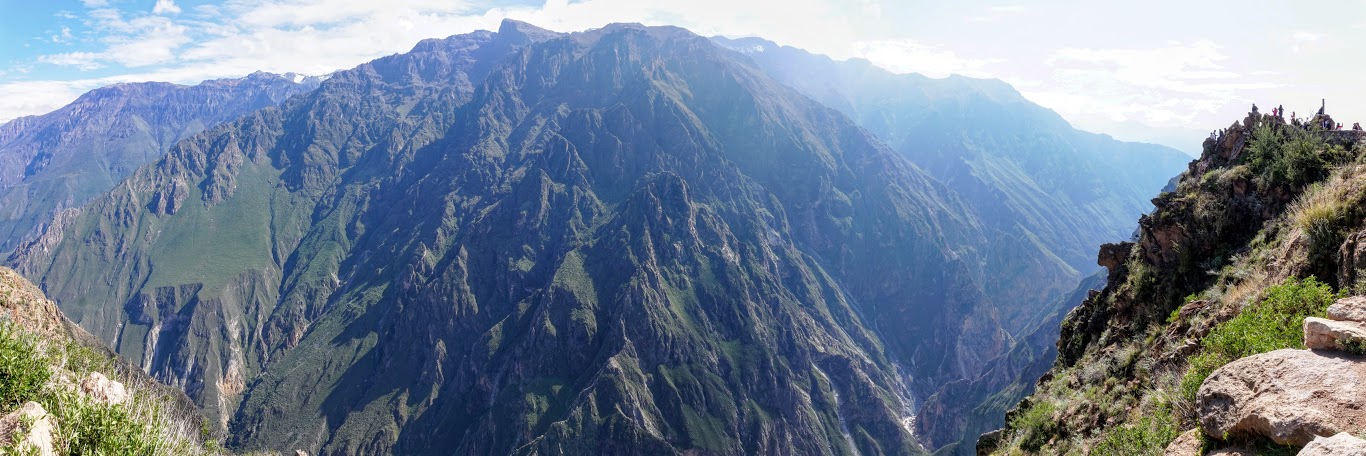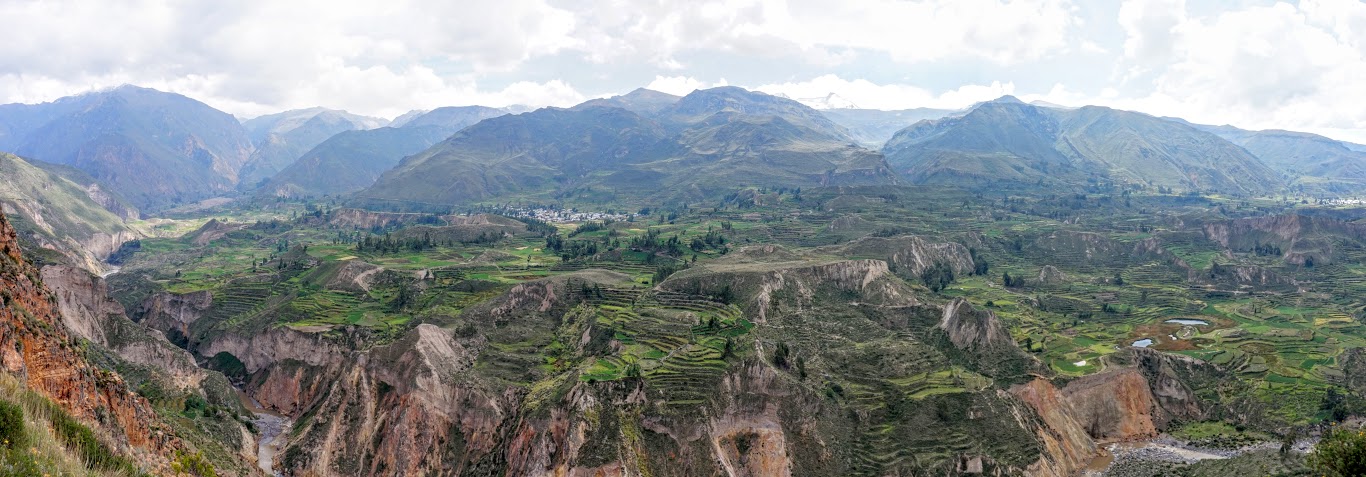We arrived in Arequipa in southern Peru late last Sunday after a twelve hour bus ride from Ica. Arequipa is a Spanish colonial town and popular tourist destination for its architecture, museums, and gateway to the Colca Canyon. The Colca Canyon is twice as deep as the Grand Canyon and one of the deepest canyons in the world. We spent a few days exploring the city before embarking on a “trek” to visit this natural wonder.
Our first day in Arequipa we did a free walking tour, which turned out to be fairly informative and highly entertaining. Free tours are often hit or miss, but we were definitely glad we did this one! We learned that Arequipa is known as “the White City” because of the white volcanic stone used in many of its building, including the picturesque main square. (Interestingly, the guide on our Colca trek said historically this name also comes from the fact that only white Spaniards lived in the city.) We toured the central market, which had a huge selection of meats, fruits, llama fetuses, and blended frog juice. Yup, you read that correctly. It’s common practice for shaman to buy the llama fetuses and bury them under new homes as a sacrifice to Pachamama (Mother Earth) to ask for her blessing. As for the blended frog juice? We didn’t see this - nor did we have any desire to try it - but according to our guide, it’s good for the memory (or at least you will never forget drinking it!). We googled this more when we got home, and it seems like a panacea, curing anything from anemia to bronchitis as well as being an Andean viagra.
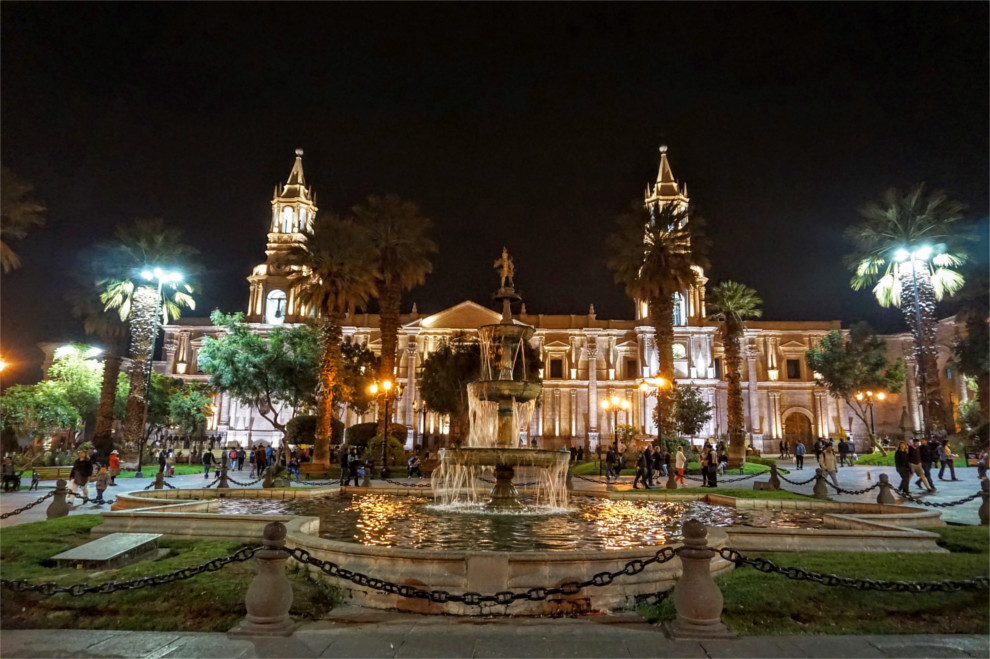
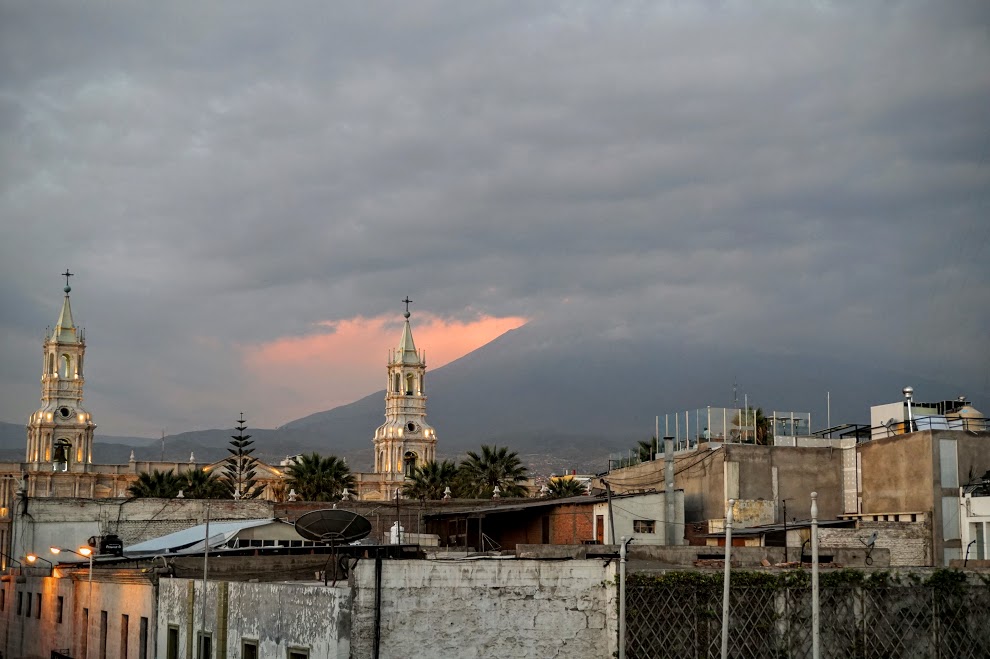
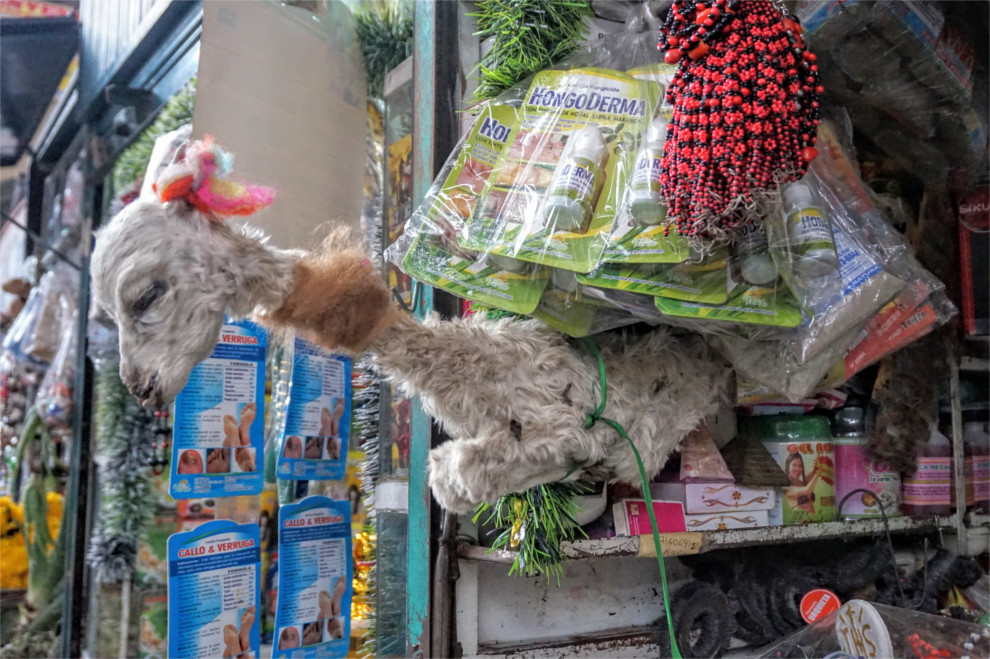
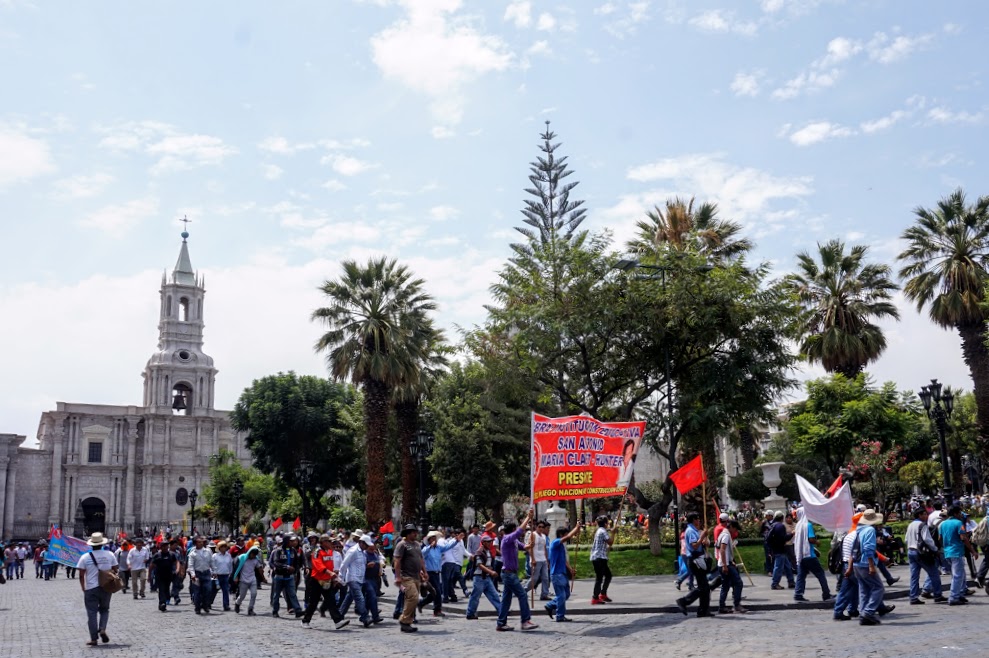
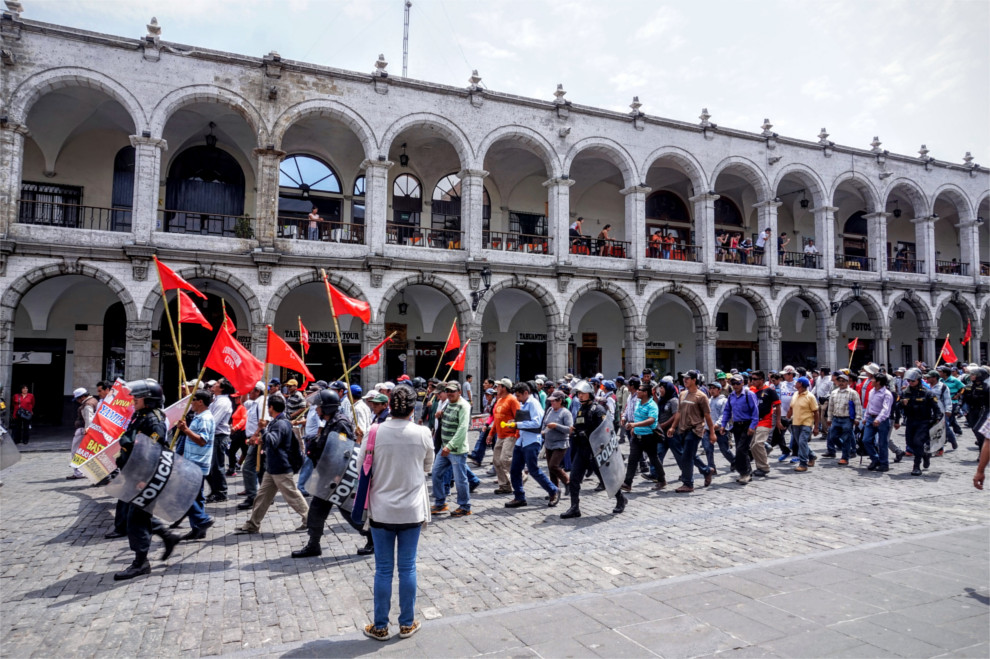

We also visited the Museo Santuarios Andinos, a museum that hosts the remains of Incan “mummies” found on nearby volcanoes. The most famous is Juanita, who isn’t actually a mummy but rather a very well preserved frozen corpse. Juanita and the other frozen bodies were human sacrifices whose skin, hair, and clothing have been kept in tact because of the freezing temperatures at the top of the volcanoes. Juanita is famous because she is so well preserved, including her internal organs! Juanita wasn’t actually on display when we were at the museum - she’s kept in a preservation tank for half of the year to prevent decomposure - but the other frozen “mummy” was still really interesting to see. We weren’t allowed to take pictures in the museum, but you can look through some here.
After getting our culture on, we of course explored the beer scene! In fact, I think we found the best beer bar of the trip. We spent the next few nights at Chelawasi Public House sampling the many Peruvian beers they had in bottles and on tap. Our experience was particularly awesome because of Colin, the bartender who provided us with some of the best beer recommendations, including two amazing IPAs. Let me repeat that: two AMAZING, hoppy, delicious IPAs from Peru! They were both from Magdalena brewery; the best one was Mala Suerte, an imperial black IPA, followed closely by Muertecita, an imperial IPA. It’s a good thing we found this place before the weekend: Sunday, April 10 is election day in Peru, and no alcohol can be sold starting 8 am Saturday morning through 8 am Monday morning. All Peruvians aged 18-70 are required to vote or pay a fine, and this dry law helps “to ensure security and order” during this time.
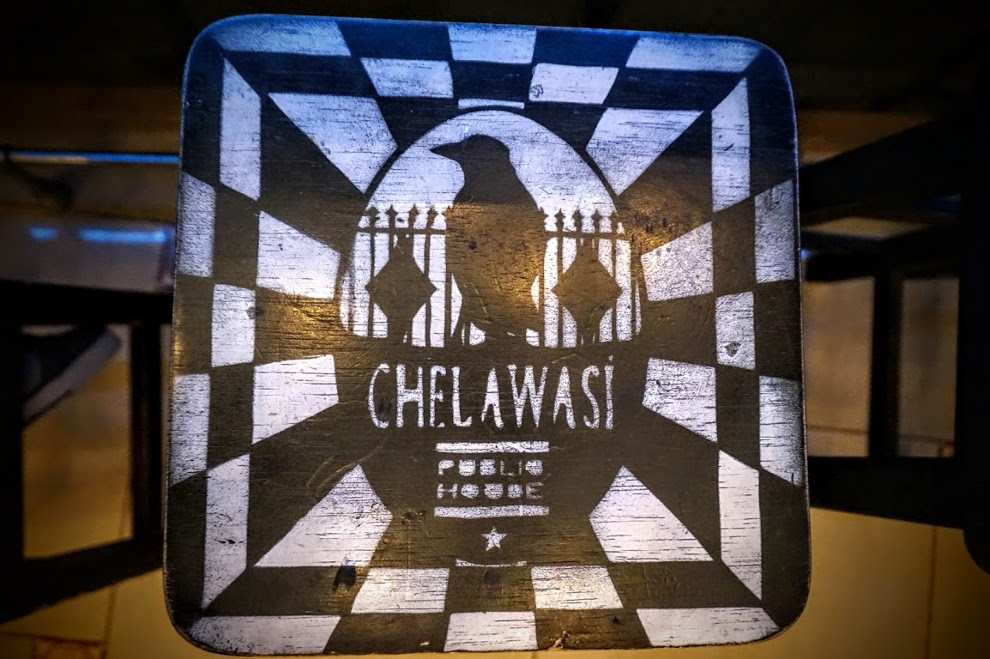
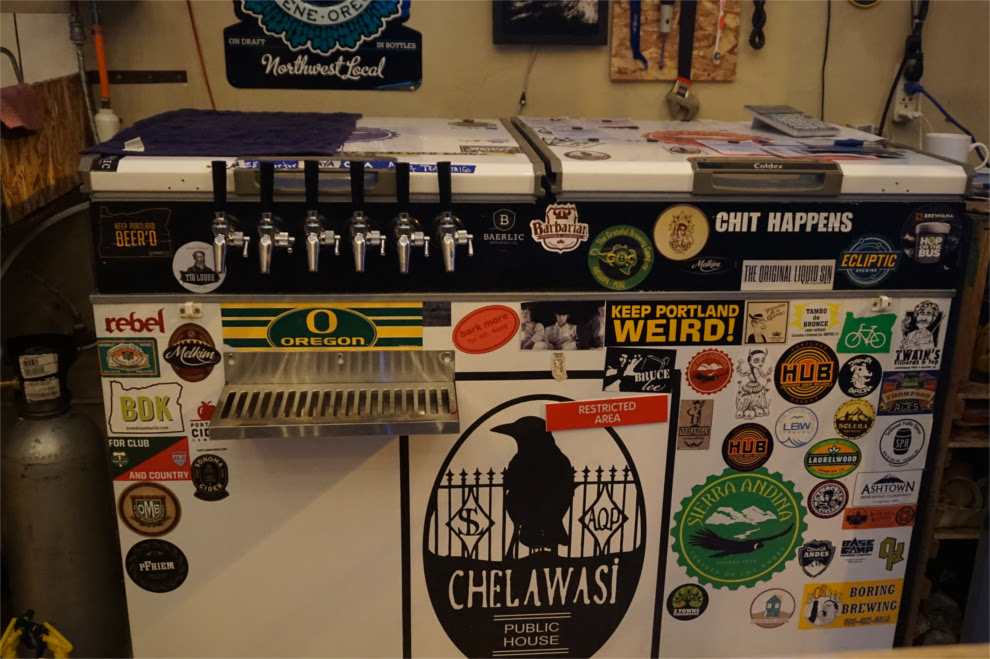
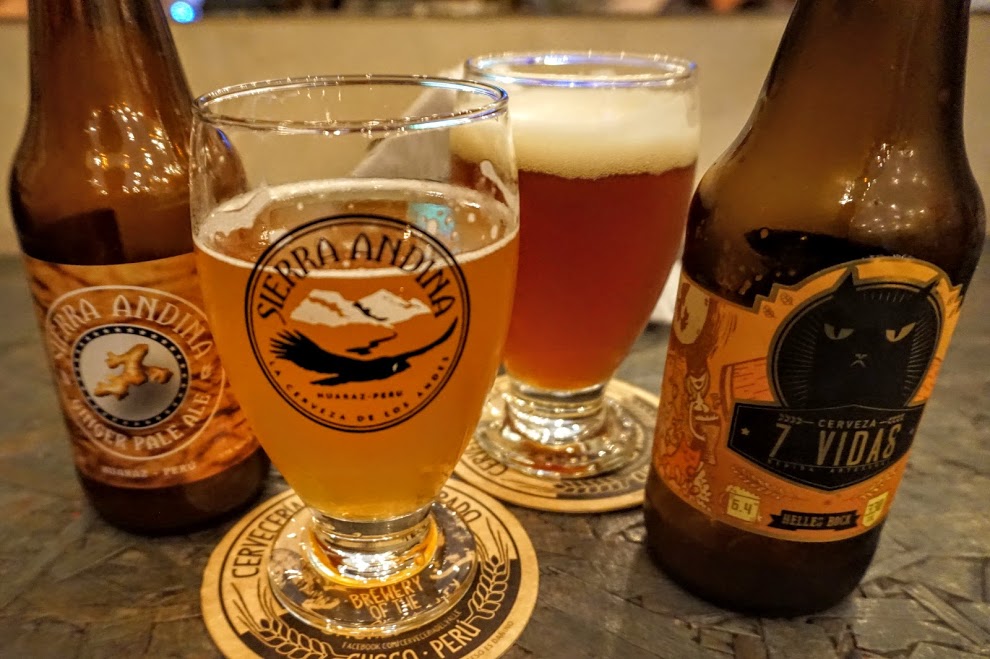
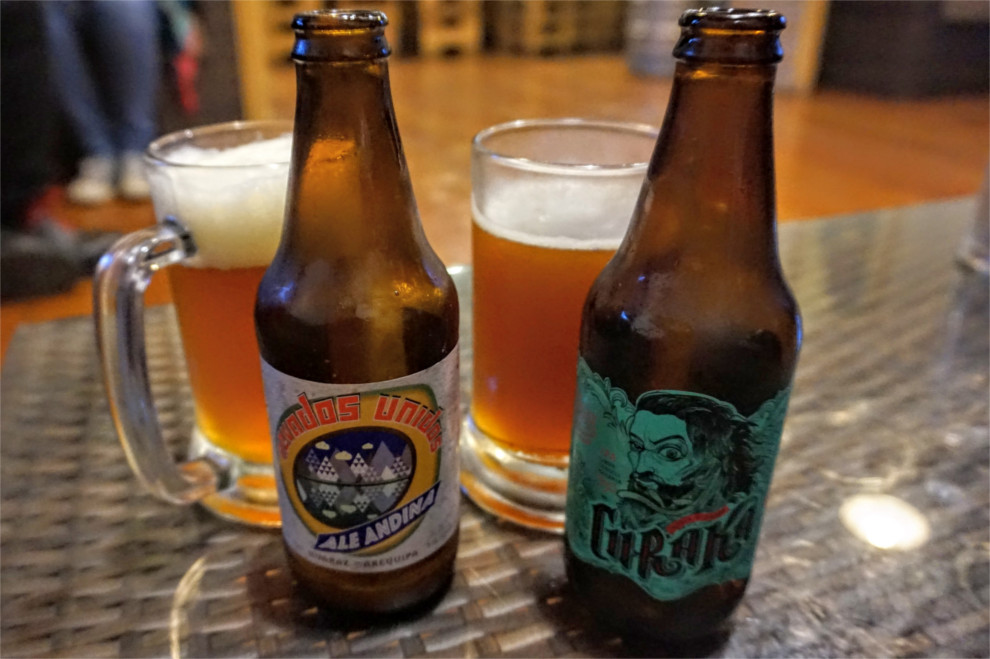
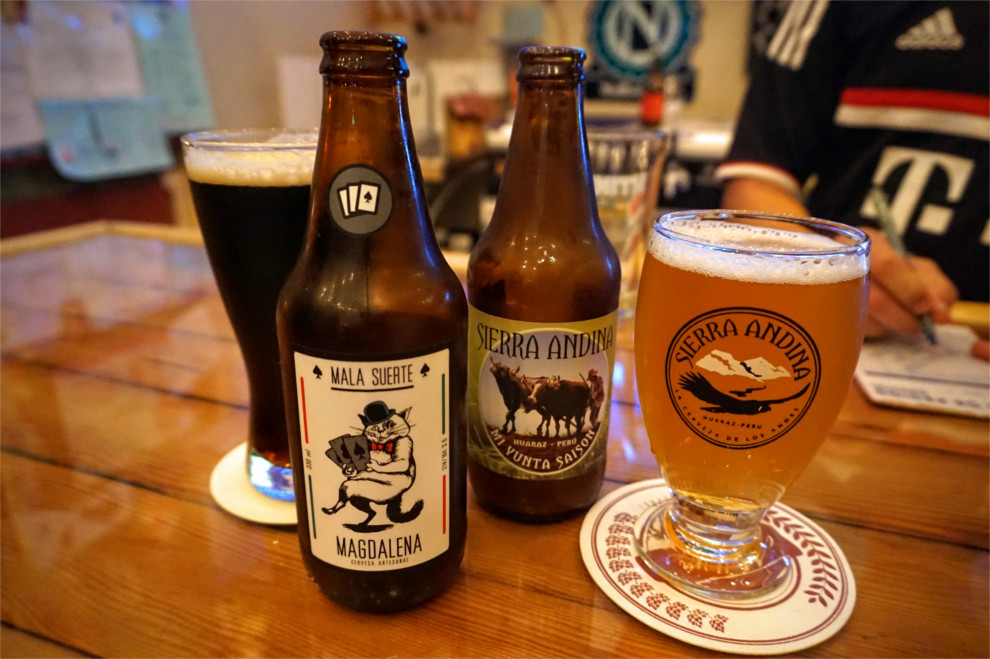
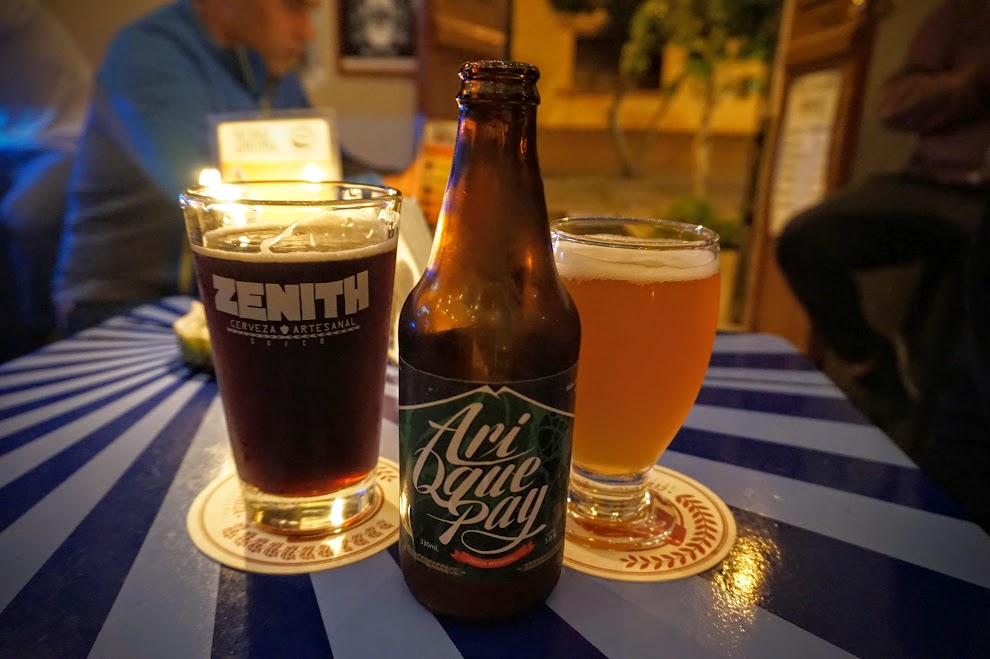
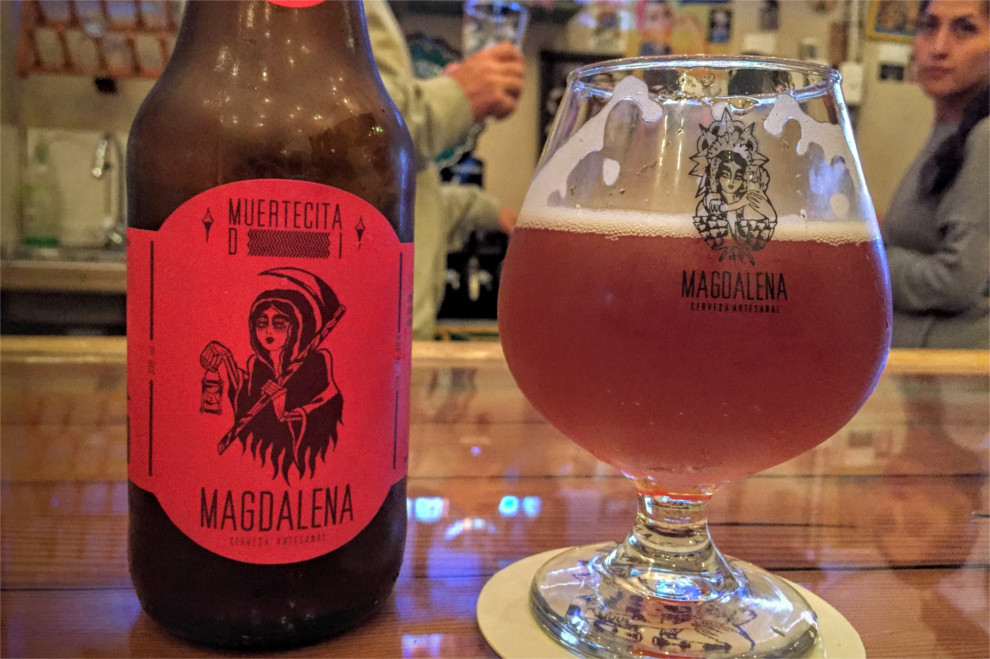
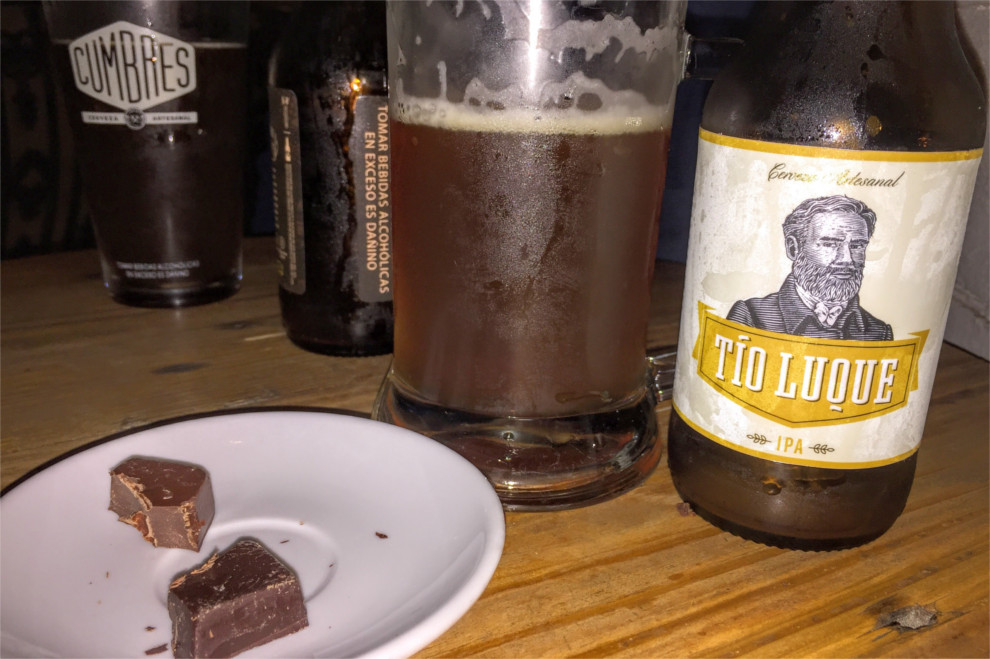
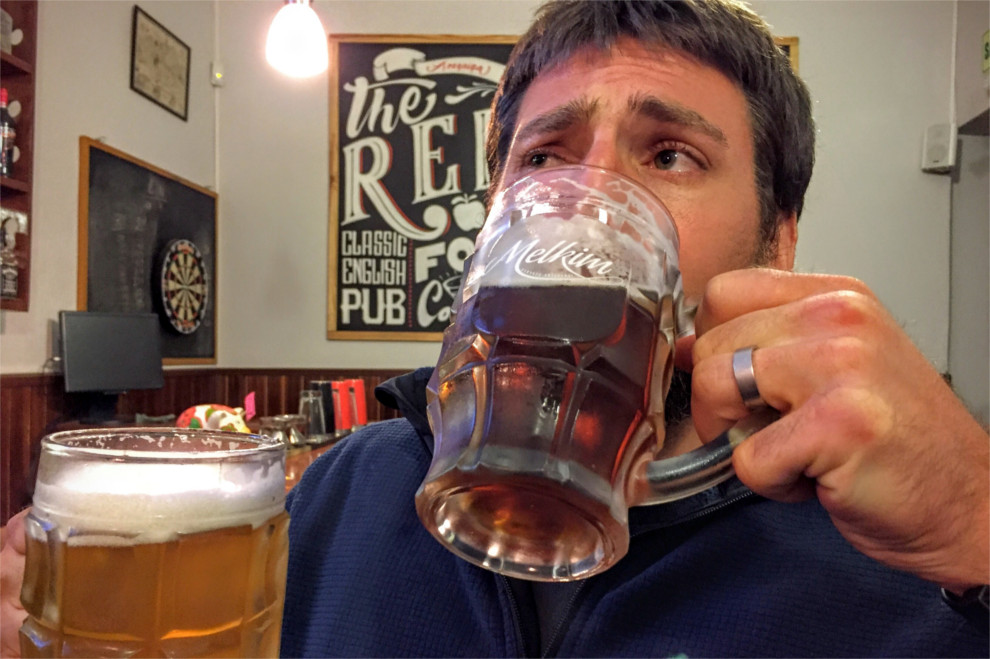
The other highlight of our stay in Arequipa was doing a Colca Canyon “trek.” I say “trek” because it was basically glamping, and it was awesome. After a few recent crappy albeit ultra cheap tours, we splurged and did a more expensive but highly recommended two day hiking/biking/bus tour. The best part of our tour was our amazing (English-speaking!) guide. Vesper even started taking notes so we could share some of the more interesting things we learned:
- Vicuñas are an undomesticated animal similar to llamas and alpacas, and we saw several when we visited the national preserve. Their wool is very expensive (something like $500/kg or $3,000 for a jacket), and every two years there is a Chaccu festival to catch and shear them. Hundreds of locals will help to round up the animals. Once one is caught, three people will hold the animal while another shears it. They use special shears to do the job quickly as they only have two minutes to complete the task, otherwise the stress can kill the animal. Check out the amazing pictures on this website for more detail.
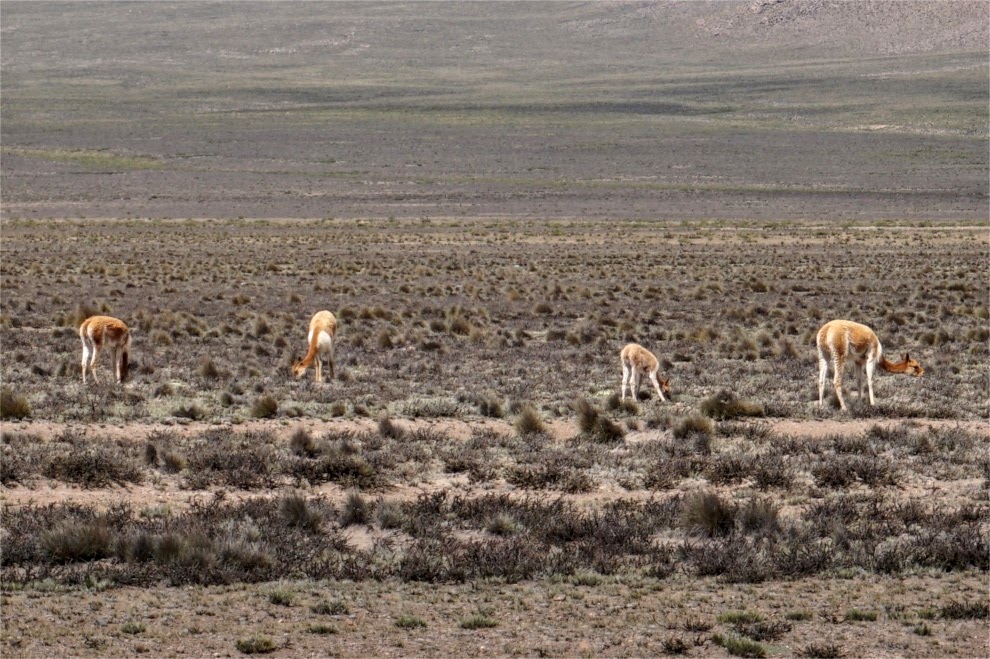
- Llamas were domesticated by the Incas, can hold up to 70 kg, and can walk all day for three months straight even in high altitudes.
- Viscacha is an animal that looks like a rabbit with a long tail and is related to the chinchilla family.
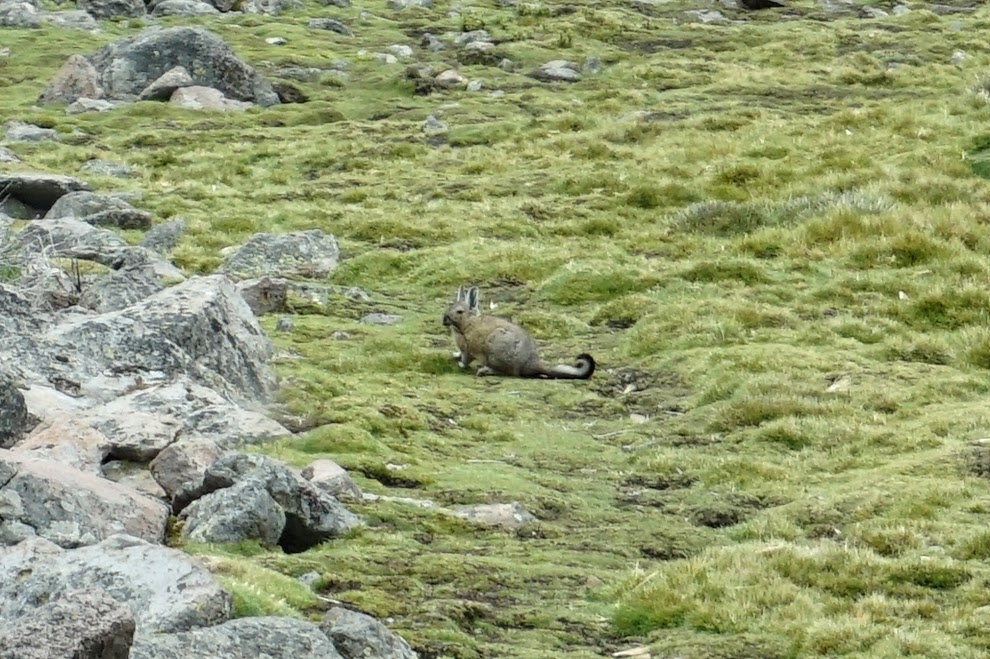
- Yareta looks like a green rock, but is actually a plant that only grows at high altitudes. It grows very slowly and can live for thousands of years, but it is now endangered because the locals use it for firewood. The plant stays warm at night by trapping heat from the sun, and so some animals like vicuñas will sleep on it.
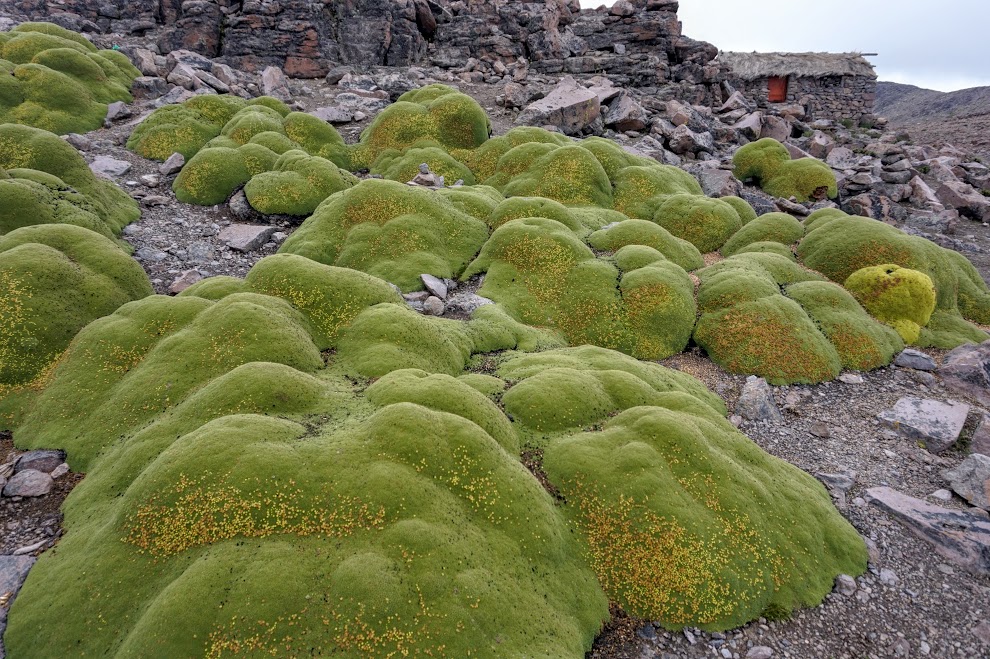
- Cochineal is a parasite that can be found on the “tuna” or “prickly pear” cactus (Opuntia). When squished, the insect’s guts/blood produce a red dye called carmine, which has been used for hundreds of years to dye textiles and in more recent years for makeup.
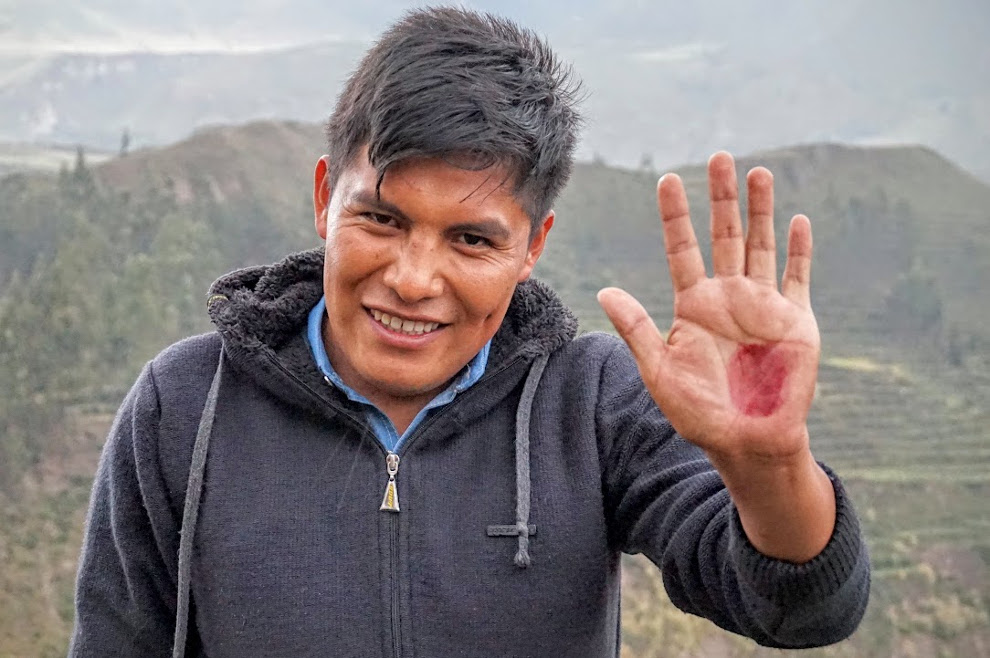
- Andean Condors are related to vultures. They are super ugly scavengers and one of the biggest birds alive! They have about a three meter wingspan and live up to 100 years in captivity. It’s unknown how long they live in the wild, but ask a local and they will tell you these birds live forever. Unlike most other birds, the Andean Condor can fly above 8,000 meters.

- Some tribes used to perform cranial deformation to show respect for their regional mountain god. They would do this with infants while the skull was still soft. They would deform their head to look similar to the shape of the mountain; for example, if the mountain was pointy on top they would bind wood around the sides of the head, and if it was flat on top they would bind wood on top of the head and under the chin.
- Wititi means love dance or sex dance. According to our guide, small towns in the Colca Valley have festivals where a boy will ask a girl to dance, and if she accepts they are supposed to dance for five days and get married two weeks later - which supposedly resulted in some 2,000 people getting married after the last festival. You can read more about the tradition on UNESCO’s website.
In addition to the fun facts we learned, we also saw some amazing scenery. One of our mini hikes was to a place that basically looked like the Peruvian version of the hoodoos at Bryce Canyon. Throughout our journey into the Colca Valley, we saw numerous Andinas (agricultural terraces in Peru), beautiful green landscapes, and snow-topped peaks. We spent the night in a tiny town at a picturesque lodge, with huge windows overlooking the valley. On the second day of the trek, we did a beautiful bike ride into the canyon, stopping along the way to look for condors, and wrapped up with a quick stop to some local hot springs. It ended up being far less physically demanding than we had expected, but it was a nice side trip to wrap up our time in Arequipa.
